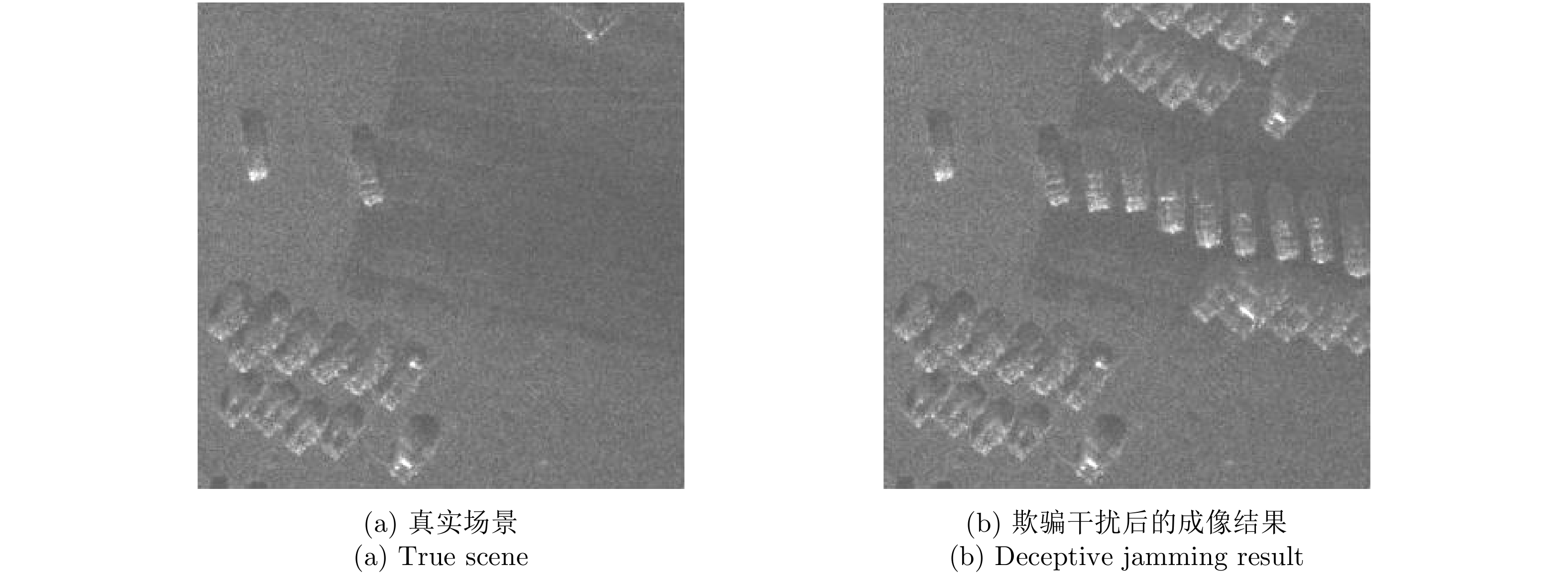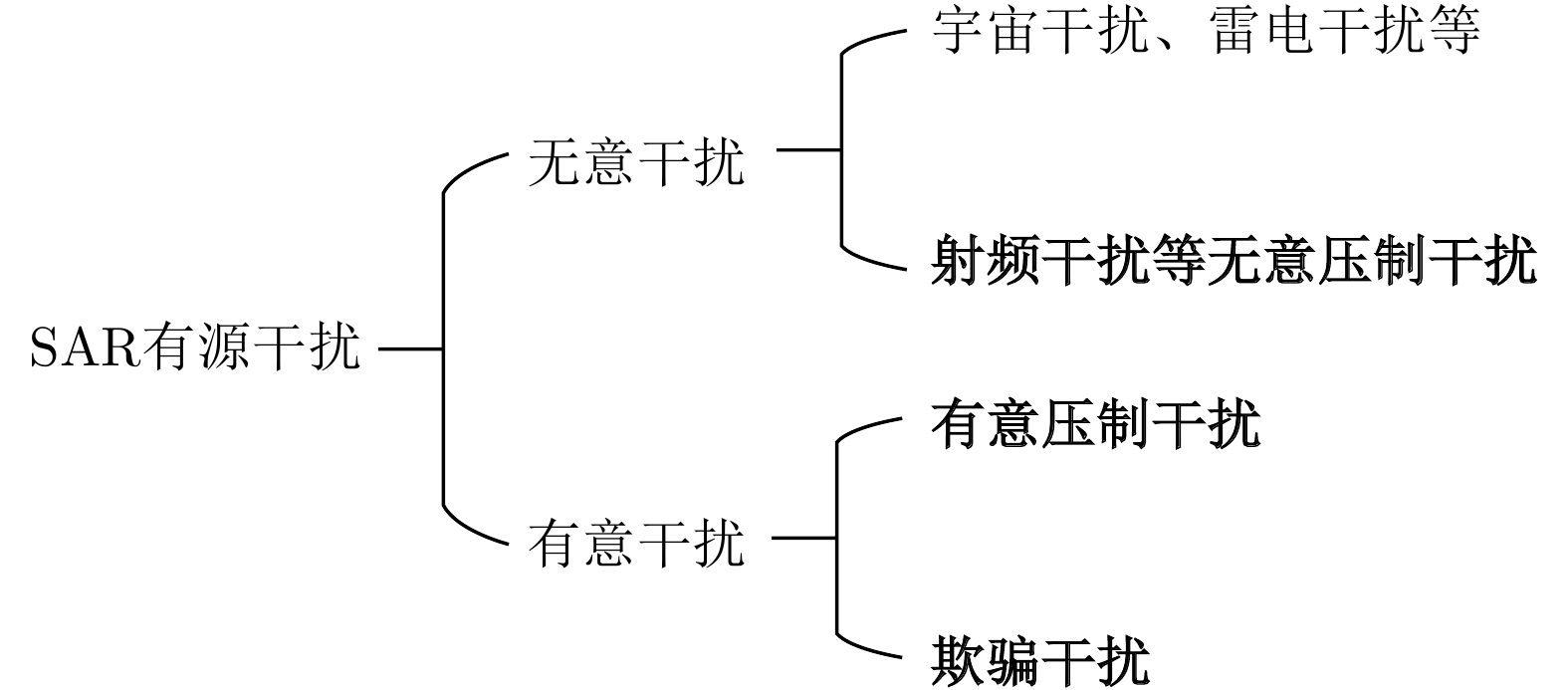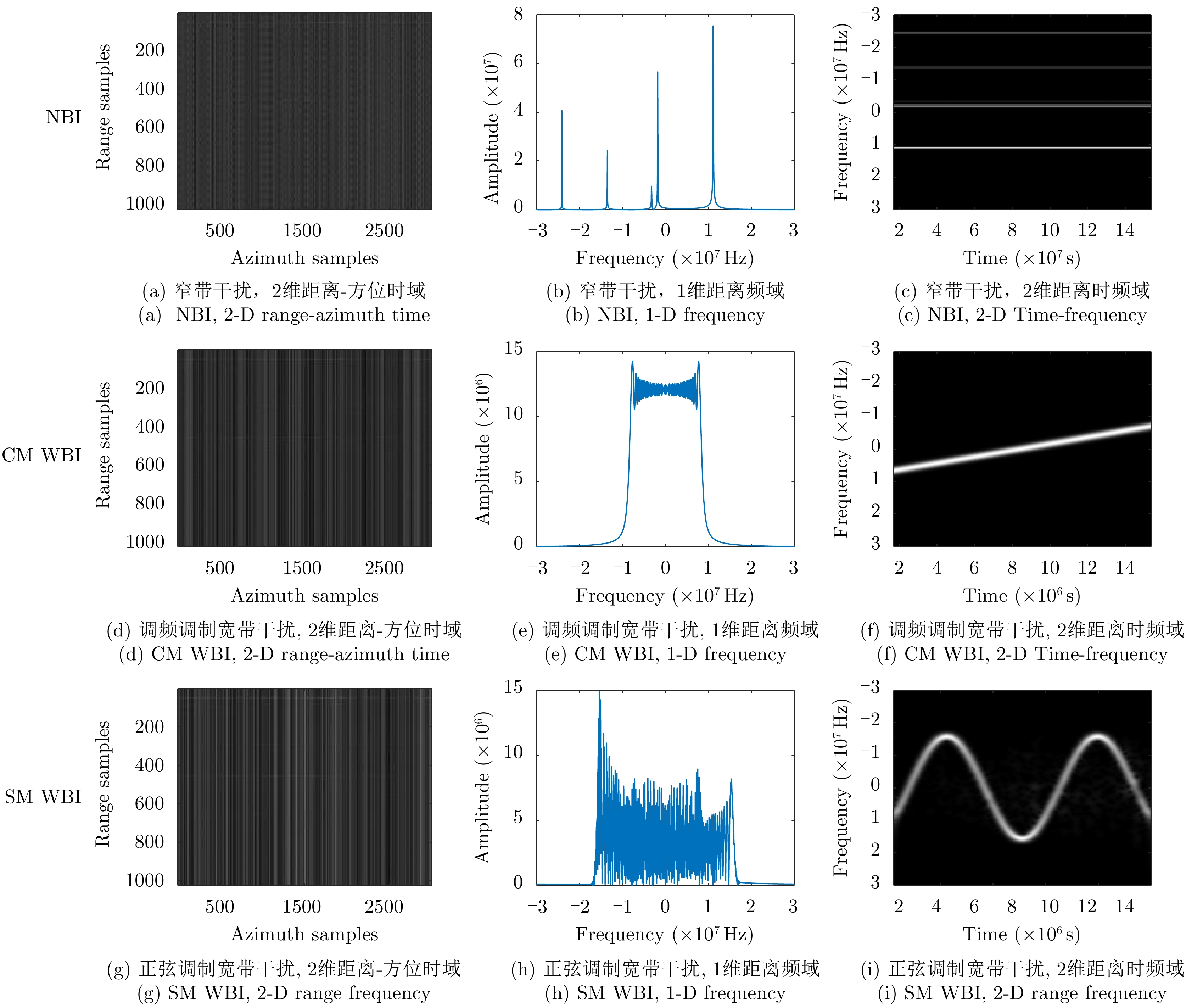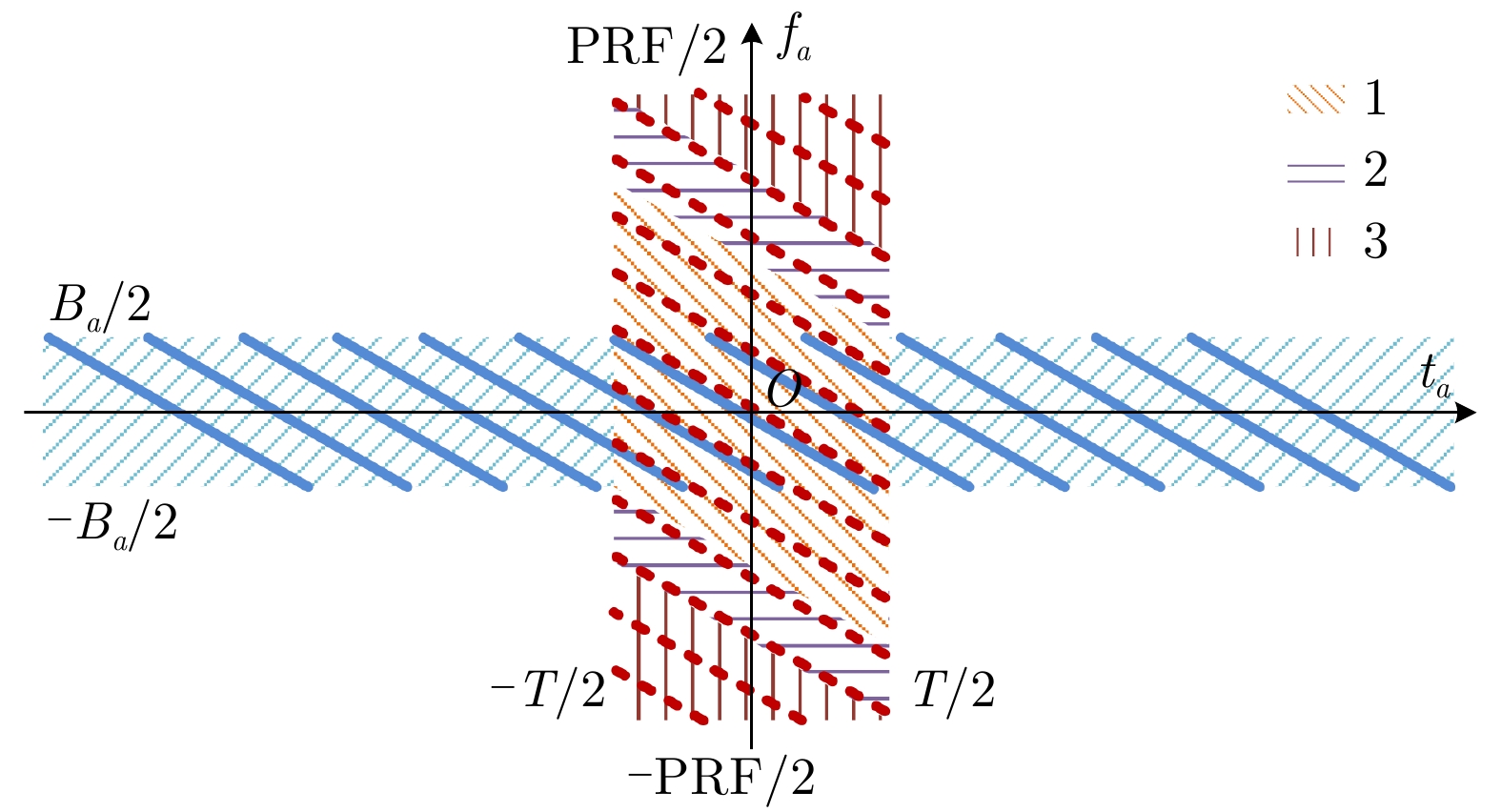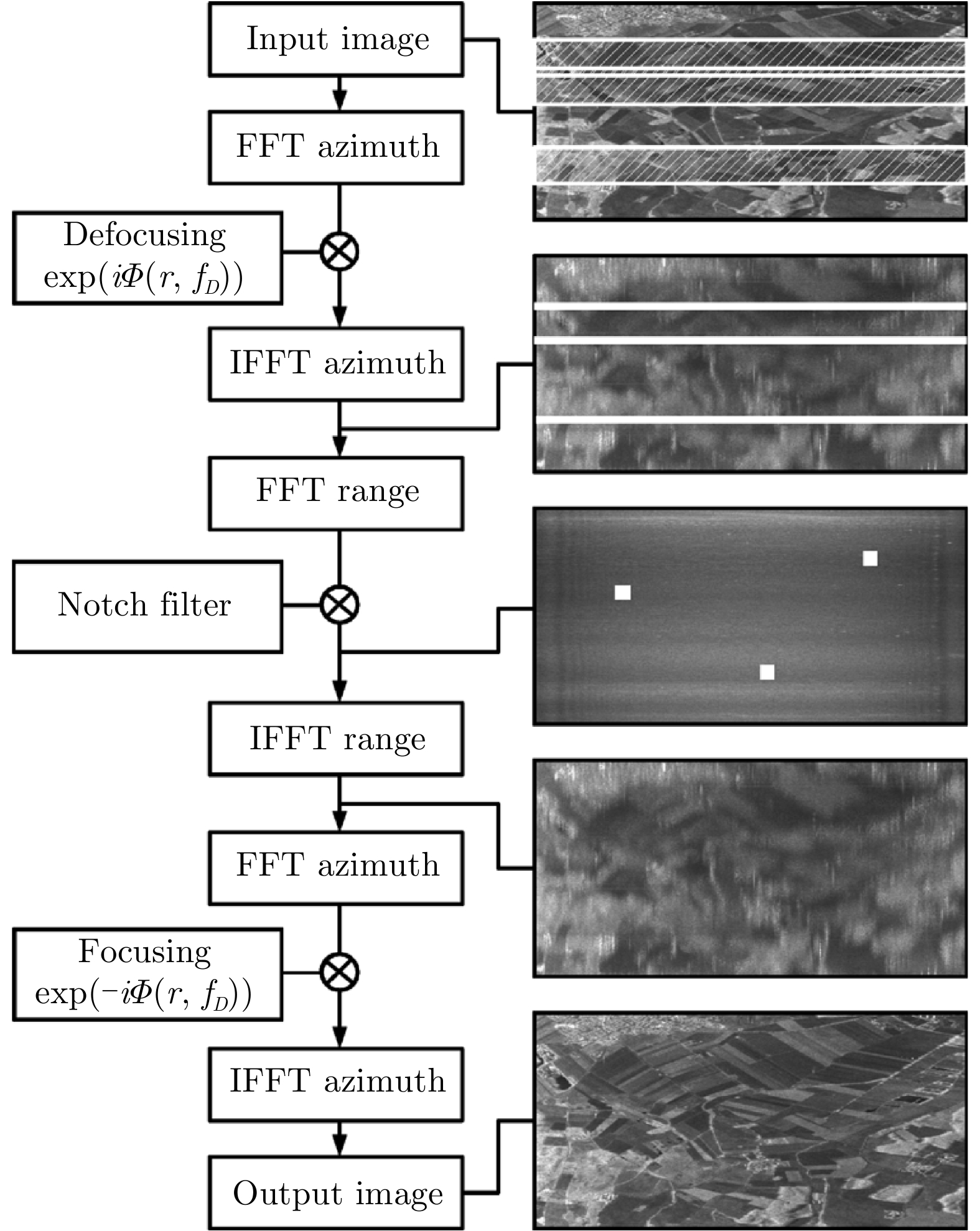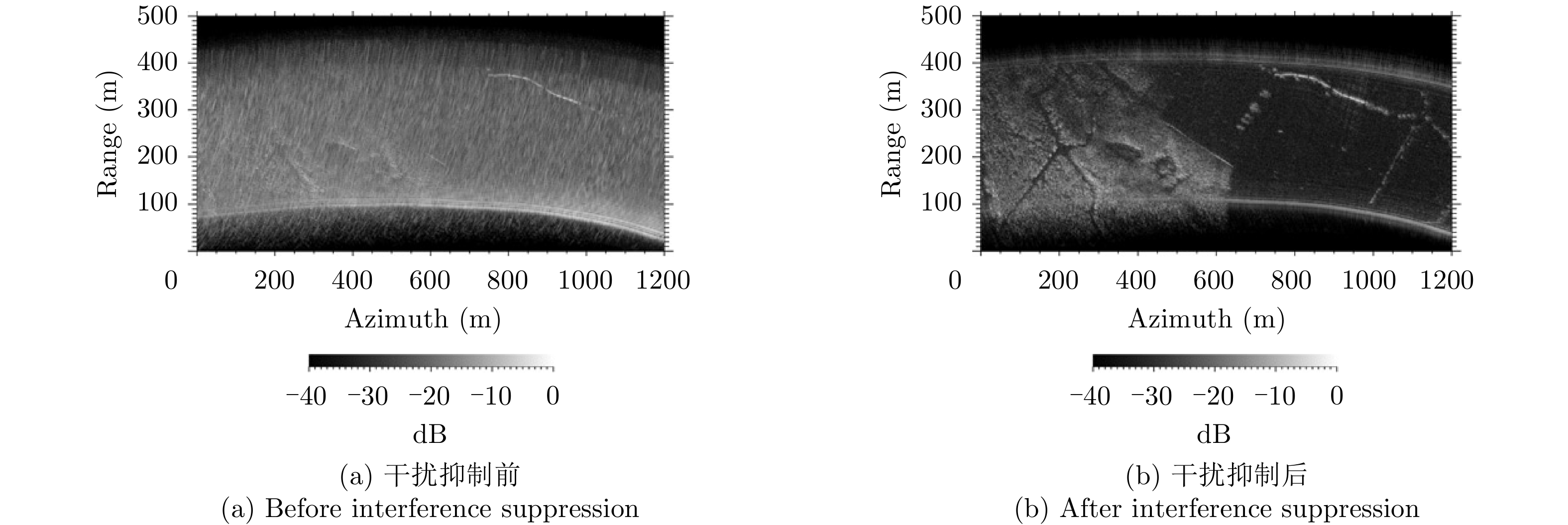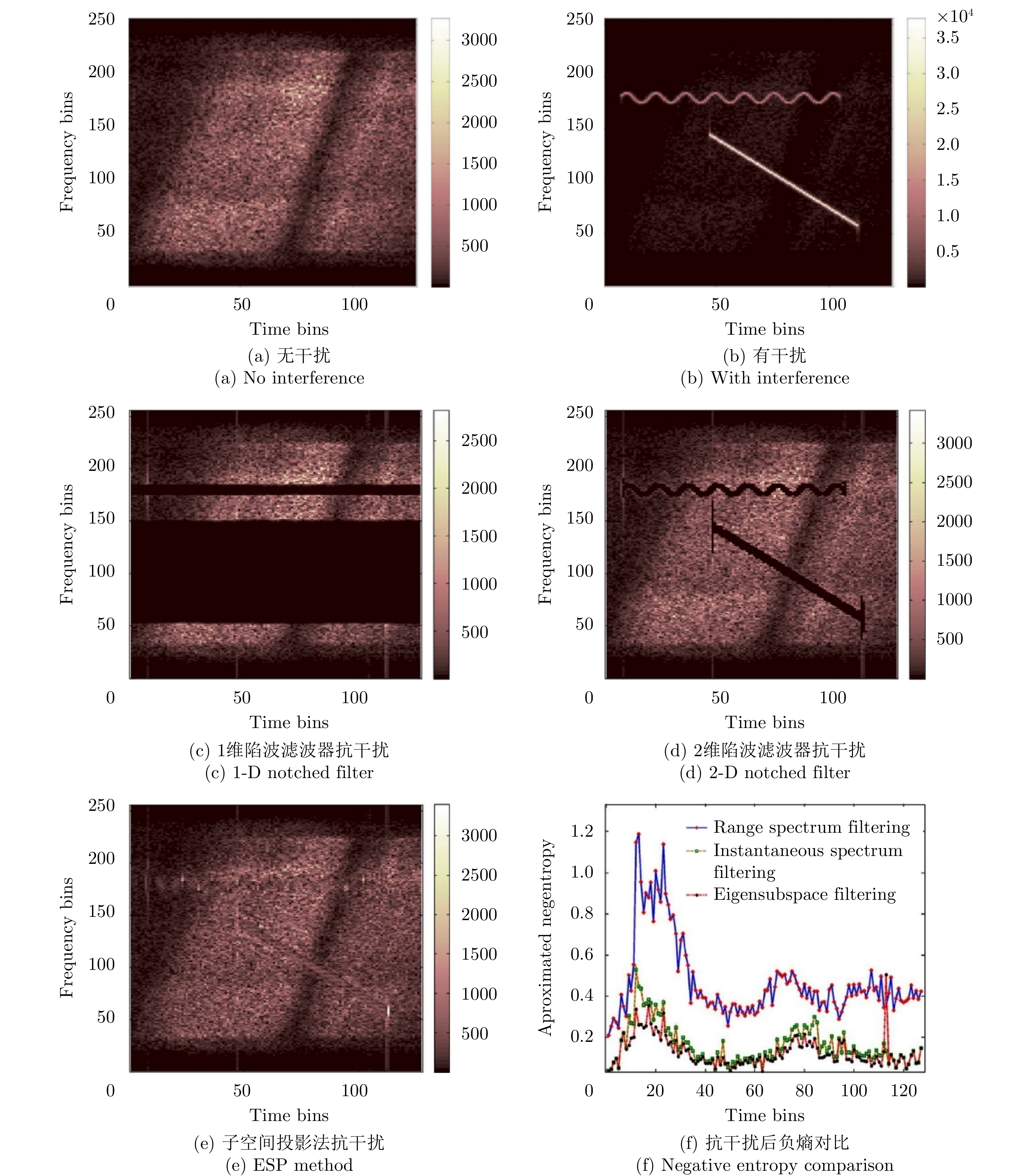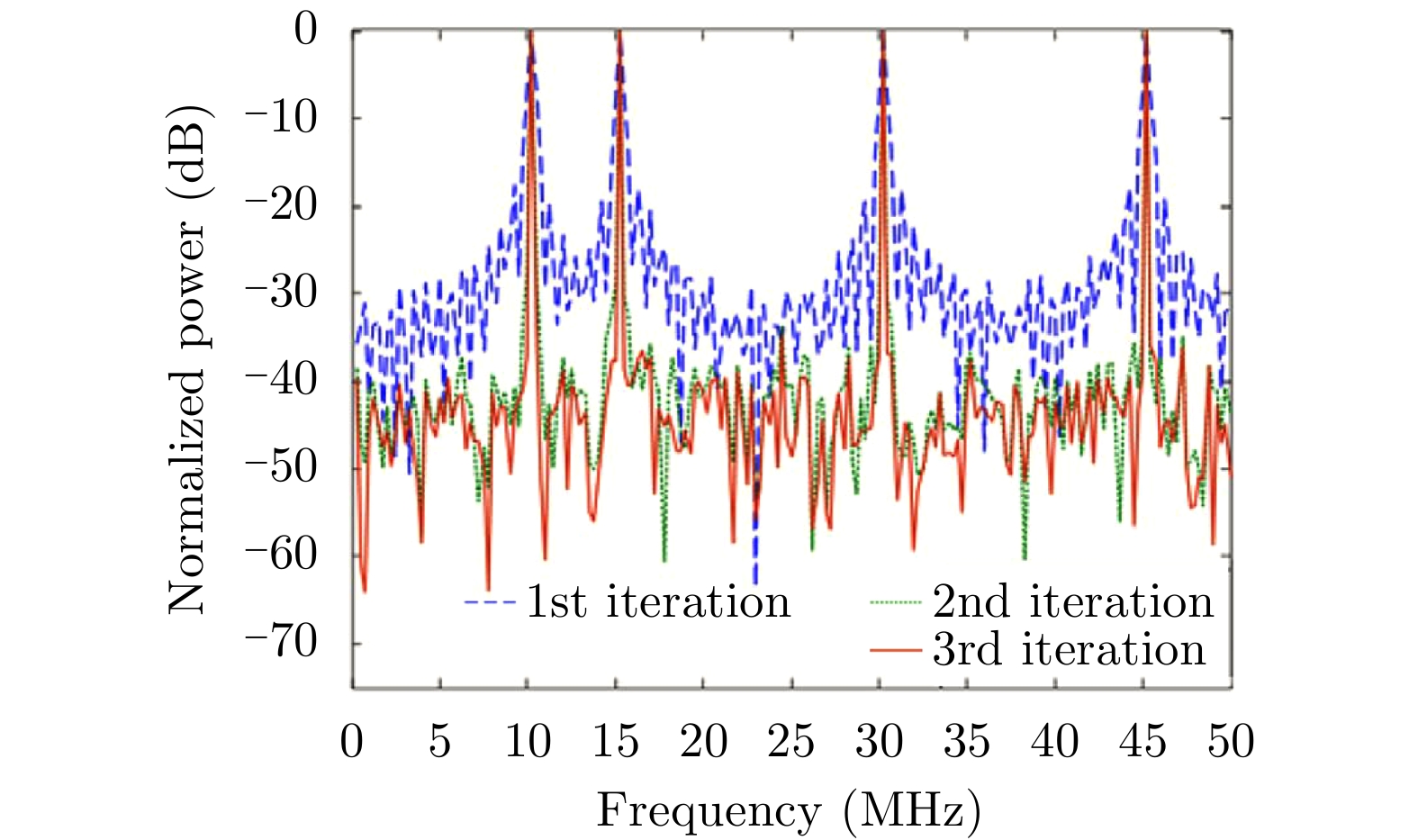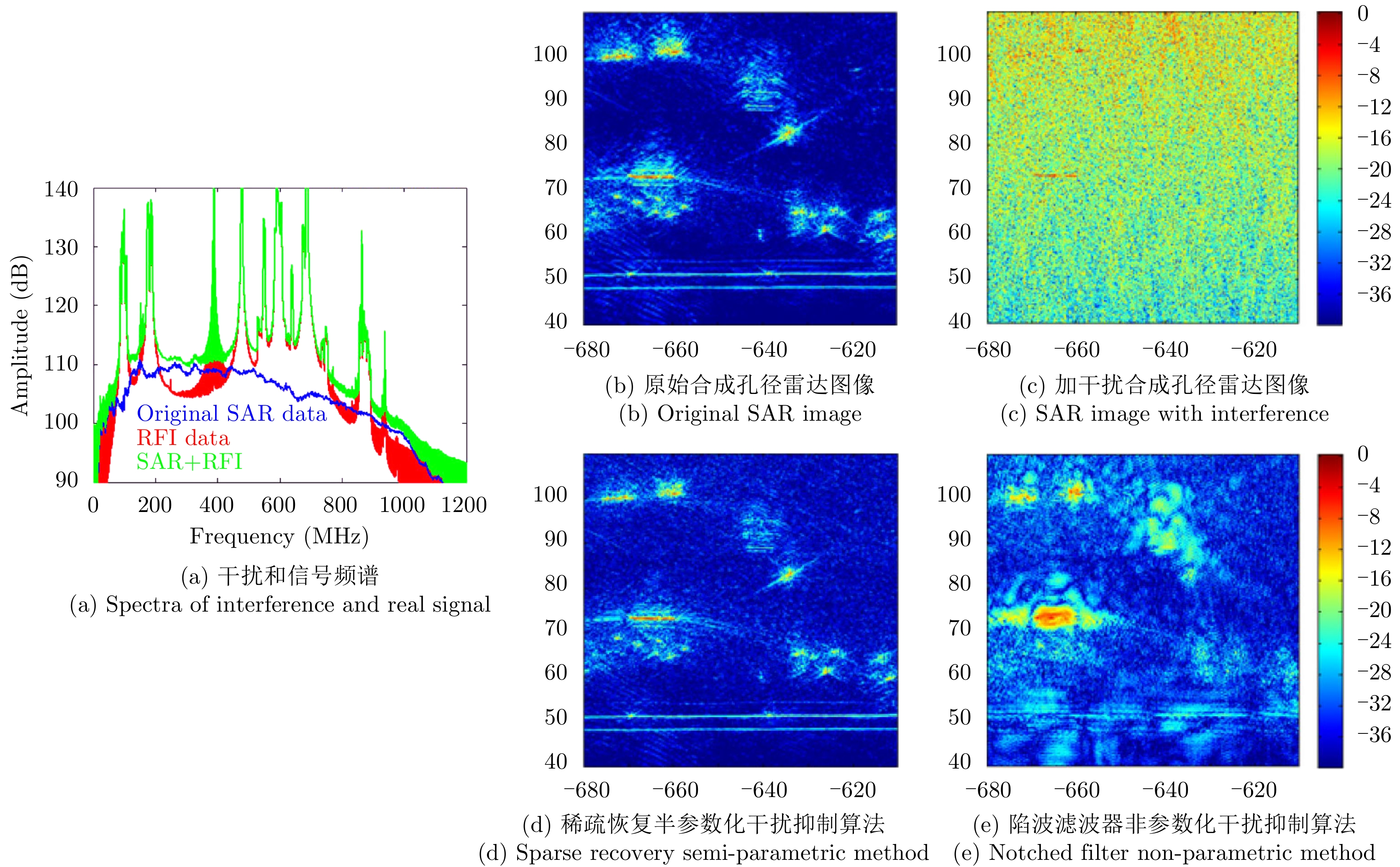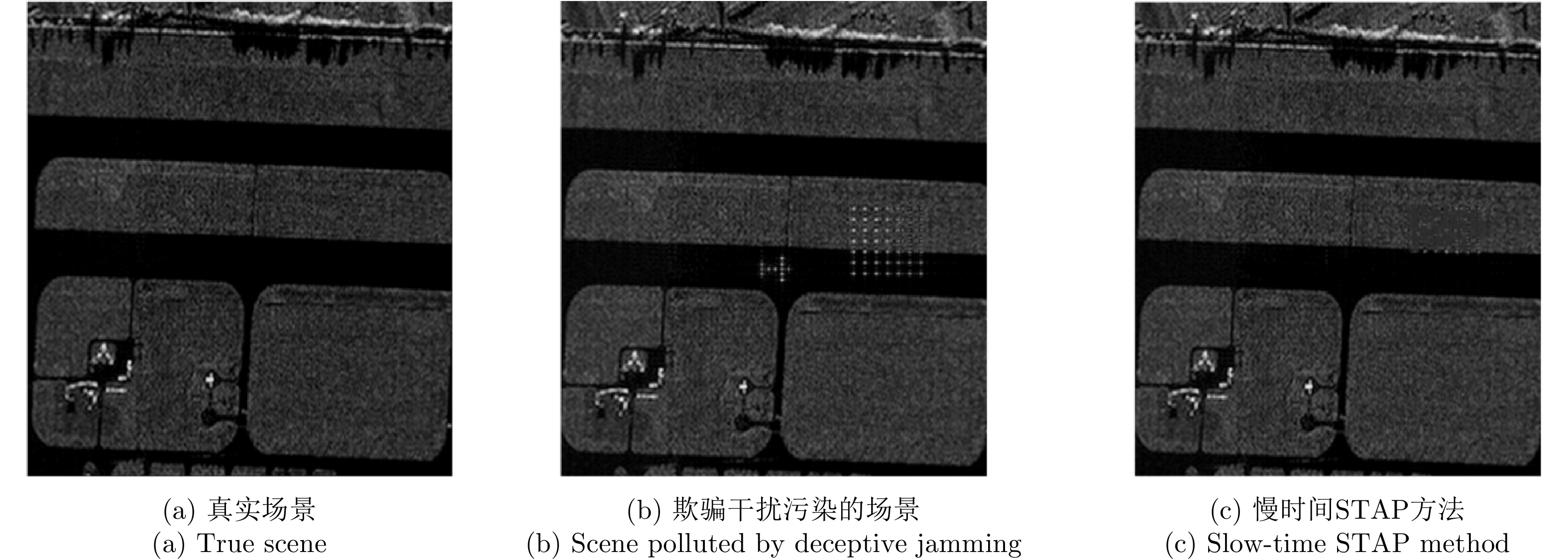| [1] |
HUANG Yan, LIAO Guisheng, XU Jingwei, et al. GMTI and parameter estimation via time-doppler chirp-varying approach for single-channel airborne SAR system[J]. IEEE Transactions on Geoscience and Remote Sensing, 2017, 55(8): 4367–4383. doi: 10.1109/TGRS.2017.2691742 |
| [2] |
HUANG Yan, LIAO Guisheng, ZHANG Zhen, et al. SAR automatic target recognition using joint low-rank and sparse multiview denoising[J]. IEEE Geoscience and Remote Sensing Letters, 2018, 15(10): 1570–1574.
|
| [3] |
HUANG Yan, LIAO Guisheng, XU Jingwei, et al. GMTI and parameter estimation for MIMO SAR system via fast interferometry RPCA method[J]. IEEE Transactions on Geoscience and Remote Sensing, 2018, 56(3): 1774–1787. doi: 10.1109/TGRS.2017.2768243 |
| [4] |
ZHANG Lei, QIAO Zhijun, XING Mengdao, et al. A robust motion compensation approach for UAV SAR imagery[J]. IEEE Transactions on Geoscience and Remote Sensing, 2012, 50(8): 3202–3218. doi: 10.1109/TGRS.2011.2180392 |
| [5] |
ZHANG Lei, XING Mengdao, QIU Chengwei, et al. Resolution enhancement for inversed synthetic aperture radar imaging under low SNR via improved compressive sensing[J]. IEEE Transactions on Geoscience and Remote Sensing, 2010, 48(10): 3824–3838. doi: 10.1109/TGRS.2010.2048575 |
| [6] |
XING Mengdao, JIANG Xiuwei, WU Renbiao, et al. Motion compensation for UAV SAR based on raw radar data[J]. IEEE Transactions on Geoscience and Remote Sensing, 2009, 47(8): 2870–2883. doi: 10.1109/TGRS.2009.2015657 |
| [7] |
ZHANG Lei, HU Mengqi, WANG Guangyong, et al. Range-dependent map-drift algorithm for focusing UAV SAR imagery[J]. IEEE Geoscience and Remote Sensing Letters, 2016, 13(8): 1158–1162. doi: 10.1109/LGRS.2016.2574752 |
| [8] |
XU Gang, GAO Yandong, LI Jinwei, et al. InSAR phase denoising: A review of current technologies and future directions[J]. IEEE Geoscience and Remote Sensing Magazine, 2020. doi: 10.1109/MGRS.2019.2955120 |
| [9] |
WANG Guanyong, ZHANG Man, HUANG Yan, et al. Robust two-dimensional spatial-variant map-drift algorithm for UAV SAR autofocusing[J]. Remote Sensing, 2019, 11(3): 340. doi: 10.3390/rs11030340 |
| [10] |
CHEN Zhanye, ZHOU Yu, ZHANG Linrang, et al. Ground moving target imaging and analysis for near-space hypersonic vehicle-borne synthetic aperture radar system with squint angle[J]. Remote Sensing, 2018, 10(12): 1966. doi: 10.3390/rs10121966 |
| [11] |
WILEY C A. Synthetic aperture radars[J]. IEEE Transactions on Aerospace and Electronic Systems, 1985, AES-21(3): 440–443. doi: 10.1109/TAES.1985.310578 |
| [12] |
CUTRONA L J, LEITH E N, PORCELLO L J, et al. On the application of coherent optical processing techniques to synthetic-aperture radar[J]. Proceedings of the IEEE, 1966, 54(8): 1026–1032. doi: 10.1109/PROC.1966.4987 |
| [13] |
SHERWIN C W, RUINA J E, and RAWCLIFFE R D. Some early developments in synthetic aperture radar system[J]. IRE Transactions on Military Electronic, 1962, 6(2): 111–115.
|
| [14] |
CUMMING I G and WONG F H. Digital Processing of Synthetic Aperture Radar Data: Algorithms and Implementation[M]. Boston, MA, USA: Artech House, 2005.
|
| [15] |
保铮, 邢孟道, 王彤. 雷达成像技术[M]. 北京: 电子工业出版社, 2005.
BAO Zheng, XING Mengdao, and WANG Tong. Radar Imaging Technique[M]. Beijing: Publishing House of Electronics Industry, 2005.
|
| [16] |
陶明亮. 极化SAR射频干扰抑制与地物分类方法研究[D]. [博士论文], 西安电子科技大学, 2016.
TAO Mingliang. Research on radio frequency interference mitigation and land cover classification for PolSAR[D]. [Ph.D. dissertation], Xidian University, 2016.
|
| [17] |
林晓烘. 星载合成孔径雷达干扰与抗干扰技术研究[D]. [博士论文], 国防科学技术大学, 2014.
LIN Xiaohong. Study on jamming and anti-jamming techniques for spaceborne synthetic aperture radar[D]. [Ph.D. dissertation], National University of Defense Technology, 2014.
|
| [18] |
ZHOU Feng and TAO Mingliang. Research on methods for narrow-band interference suppression in synthetic aperture radar data[J]. IEEE Journal of Selected Topics in Applied Earth Observations and Remote Sensing, 2015, 8(7): 3476–3485. doi: 10.1109/JSTARS.2015.2431916 |
| [19] |
黄岩. 复杂电磁环境下合成孔径雷达动目标检测与识别方法研究[D]. [博士论文], 西安电子科技大学, 2018.
HUANG Yan. Research on techniques of moving target detection and recognition for synthetic aperture radar in complex electromagnetism environment[D]. [Ph.D. dissertation], Xidian University, 2018.
|
| [20] |
SANDERS F H, SOLE R L, BEDFORD B L, et al. Effects of RF interference on radar receivers[R]. NTIA Report TR-06-444, 2006.
|
| [21] |
ZHAO Bo, ZHOU Feng, and BAO Zheng. Deception jamming for squint SAR based on multiple receivers[J]. IEEE Journal of Selected Topics in Applied Earth Observations and Remote Sensing, 2015, 8(8): 3988–3998. doi: 10.1109/JSTARS.2014.2322612 |
| [22] |
ZHAO Bo, HUANG Lei, ZHOU Feng, et al. Performance improvement of deception jamming against SAR based on minimum condition number[J]. IEEE Journal of Selected Topics in Applied Earth Observations and Remote Sensing, 2017, 10(3): 1039–1055. doi: 10.1109/JSTARS.2016.2614957 |
| [23] |
张永顺, 童宁宁, 赵国庆. 雷达电子战原理[M]. 北京: 国防工业出版社, 2006.
ZHANG Yongshun, TONG Ningning, and ZHAO Guoqing. Principle of Radar Electronic Warfare[M]. Beijing: National Defense Industry Publishing House, 2006.
|
| [24] |
袁文先, 杨巧玲. 百年电子战[M]. 北京: 军事科学出版社, 2008.
YUAN Wenxian and YANG Qiaoling. Electronic Warfare for A Century[M]. Beijing: Military Science Publishing House, 2008.
|
| [25] |
赵国庆. 雷达对抗原理[M]. 西安: 西安电子科技大学出版社, 1999.
ZHAO Guoqing. Principle of Radar Countermeasure[M]. Xi’an: Xidian University Publishing House, 1999.
|
| [26] |
TAO Mingliang, ZHOU Feng, and ZHANG Zijing. Characterization and mitigation of radio frequency interference in PolSAR data[J]. Radio Science, 2017, 52(11): 1405–1418. doi: 10.1002/2017RS006252 |
| [27] |
何发远, 谢明, 吴晓红, 等. 一种星载SAR图像欺骗式干扰技术[J]. 四川大学学报: 自然科学版, 2009, 46(4): 993–998.
HE Fayuan, XIE Ming, WU Xiaohong, et al. A technology of deceiving jamming for space born SAR images[J]. Journal of Sichuan University:Natural Science Edition, 2009, 46(4): 993–998.
|
| [28] |
|
| [29] |
李伟. 分布式星载SAR干扰与抗干扰研究[D]. [博士论文], 国防科学技术大学, 2006.
LI Wei. Research on technology of distributed Spaceborne SAR jamming and anti-jamming[D]. [Ph.D. dissertation], National University of Defense Technology, 2006.
|
| [30] |
张云鹏, 毕大平, 周阳, 等. 余弦调相散射波干扰对SAR双通道对消干扰抑制的影响[J]. 遥感学报, 2019, 23(1): 99–107.
ZHANG Yunpeng, BI Daping, ZHOU Yang, et al. Effect of cosinusoidal phase-modulated scatter-wave jamming to the jamming suppression of SAR dual-channel cancellation[J]. Journal of Remote Sensing, 2019, 23(1): 99–107.
|
| [31] |
|
| [32] |
GAN Rongbing, WANG Jianguo, and HE Chuan. Phase estimation in rebound jamming suppression by two-channel SAR[J]. Acta Electronica Sinica, 2005, 33(9): 1691–1693. doi: 10.3321/j.issn:0372-2112.2005.09.037 |
| [33] |
HUANG Yan, LAN Lan, ZHANG Lei, et al. Simultaneous narrowband and wideband interference suppression on single-channel SAR system via low-rank recovery[C]. 2019 IEEE International Geoscience and Remote Sensing Symposium, Yokohama, Japan, 2019: 600–603.
|
| [34] |
HUANG Yan, ZHANG Lei, LI Jie, et al. A novel tensor technique for simultaneous narrowband and wideband interference suppression on single-channel SAR system[J]. IEEE Transactions on Geoscience and Remote Sensing, 2019, 57(12): 9575–9588. doi: 10.1109/TGRS.2019.2927764 |
| [35] |
FAN Weiwei, ZHOU Feng, TAO Mingliang, et al. Interference mitigation for synthetic aperture radar based on deep residual network[J]. Remote Sensing, 2019, 11(14): 1654. doi: 10.3390/rs11141654 |
| [36] |
ZHOU Feng, ZHAO Bo, TAO Mingliang, et al. A large scene deceptive jamming method for space-borne SAR[J]. IEEE Transactions on Geoscience and Remote Sensing, 2013, 51(8): 4486–4495. doi: 10.1109/TGRS.2013.2259178 |
| [37] |
ZHAO Bo, ZHOU Feng, SHI Xiaoran, et al. Multiple targets deception jamming against ISAR using electromagnetic properties[J]. IEEE Sensors Journal, 2015, 15(4): 2031–2038. doi: 10.1109/JSEN.2014.2368985 |
| [38] |
CAZZANIGA G and GUARNIERI A M. Removing RF interferences from P-band airplane SAR data[C]. 1996 International Geoscience and Remote Sensing Symposium, Lincoln, USA, 1996: 1845–1847.
|
| [39] |
BUCKREUSS S and HORN R. E-SAR P-band SAR subsystem design and RF-interference suppression[C]. The Sensing and Managing the Environment. 1998 IEEE International Geoscience and Remote Sensing Symposium Proceedings, Seattle, USA, 1998: 466–468.
|
| [40] |
MEYER F J, NICOLL J B, and DOULGERIS A P. Correction and characterization of radio frequency interference signatures in L-band synthetic aperture radar data[J]. IEEE Transactions on Geoscience and Remote Sensing, 2013, 51(10): 4961–4972. doi: 10.1109/TGRS.2013.2252469 |
| [41] |
ITU-R Recommendation RS. Mitigation technique to facilitate the use of the 1 215-1 300 MHz band by the earth exploration-satellite service (Active) and the space research service (Active)[EB/OL] https://www.itu.int/rec/R-REC-RS.1749/en, 2006. |
| [42] |
NABIL H, CHEN Jie, KAMEL H, et al. Bidirectional notch filter for suppressing pulse modulated radio-frequency-interference in SAR data[C]. 2014 IEEE Geoscience and Remote Sensing Symposium, Quebec City, Canada, 2014: 1136–1139.
|
| [43] |
FENG Jin, ZHENG Huifang, DENG Yunkai, et al. Application of subband spectral cancellation for SAR narrow-band interference suppression[J]. IEEE Geoscience and Remote Sensing Letters, 2012, 9(2): 190–193. doi: 10.1109/LGRS.2011.2163150 |
| [44] |
REIGBER A and FERRO-FAMIL L. Interference suppression in synthesized SAR images[J]. IEEE Geoscience and Remote Sensing Letters, 2005, 2(1): 45–49. doi: 10.1109/LGRS.2004.838419 |
| [45] |
DOERRY A W. Apodized RFI filtering of synthetic aperture radar images[R]. Sandia Report SAND2014-1376, 2014.
|
| [46] |
NATSUAKI R, MOTOHKA T, WATANABE M, et al. An autocorrelation-based radio frequency interference detection and removal method in azimuth-frequency domain for SAR image[J]. IEEE Journal of Selected Topics in Applied Earth Observations and Remote Sensing, 2017, 10(12): 5736–5751. doi: 10.1109/JSTARS.2017.2775205 |
| [47] |
DAVIS M E. Frequency allocation challenges for ultra-wideband radars[J]. IEEE Aerospace and Electronic Systems Magazine, 2013, 28(7): 12–18. doi: 10.1109/MAES.2013.6559376 |
| [48] |
PINHEIRO M, RODRIGUEZ-CASSOLA M, PRATS-IRAOLA P, et al. Reconstruction of coherent pairs of synthetic aperture radar data acquired in interrupted mode[J]. IEEE Transactions on Geoscience and Remote Sensing, 2015, 53(4): 1876–1893. doi: 10.1109/TGRS.2014.2350255 |
| [49] |
MUSGROVE C and WEST J C. Application of equalization notch to improve synthetic aperture radar coherent data products[C]. The Radar Sensor Technology XIX; and Active and Passive Signatures VI, Baltimore, United States, 2015: 94610T.
|
| [50] |
MUSGROVE C H and WEST J C. Mitigating effects of missing data for SAR coherent images[J]. IEEE Transactions on Aerospace and Electronic Systems, 2017, 53(2): 716–721. doi: 10.1109/TAES.2017.2664558 |
| [51] |
MUSGROVE C H and WEST J C. Replacing missing data between airborne SAR coherent image pairs[J]. IEEE Transactions on Aerospace and Electronic Systems, 2017, 53(6): 3150–3158. doi: 10.1109/TAES.2017.2733860 |
| [52] |
LE C T C, HENSLEY S, and CHAPIN E. Removal of RFI in wideband radars[C]. IGARSS’98. Sensing and Managing the Environment. 1998 IEEE International Geoscience and Remote Sensing Symposium Proceedings, Seattle, USA, 1998: 2032–2034.
|
| [53] |
LE C T, HENSLEY S, and CHAPIN E. Adaptive filtering of RFI in wideband SAR signals[C]. The 7th Annual JPL AirSAR Workshop, California, USA, 1998: 41–50.
|
| [54] |
POTIS A, UZUNOGLOU N, FRANGOS P, et al. Analysis of P-band synthetic aperture radar for airborne and spaceborne applications[R]. National Technical University of Athens (Greece), Department of Electrical and Computer Engineering, 2000.
|
| [55] |
POTSIS A, REIGBER A, PAPATHANASSIOU K P, et al. A phase preserving method for RF interference suppression in P-band synthetic aperture radar interferometric data[C]. IEEE 1999 International Geoscience and Remote Sensing Symposium, Hamburg, Germany, 1999: 2655–2657.
|
| [56] |
ROSEN P A, HENSLEY S, and LE C. Observations and mitigation of RFI in ALOS PALSAR SAR data: Implications for the DESDynI mission[C]. 2008 IEEE Radar Conference, Rome, Italy, 2008: 1–6.
|
| [57] |
LORD R T and INGGS M R. Efficient RFI suppression in SAR using LMS adaptive filter integrated with range/Doppler algorithm[J]. Electronics Letters, 1999, 35(8): 629–630. doi: 10.1049/el:19990437 |
| [58] |
LORD R T and INGGS M R. Efficient RFI suppression in SAR using a LMS adaptive filter with sidelobe suppression integrated with the range-doppler algorithm[C]. 1999 International Geoscience and Remote Sensing Symposium, Hamburg, Germany, 1999: 574–576.
|
| [59] |
LUO X, ULANDER L M H, ASKNE J, et al. RFI suppression in ultra-wideband SAR systems using LMS filters in frequency domain[J]. Electronics Letters, 2001, 37(4): 241–243. doi: 10.1049/el:20010153 |
| [60] |
HARCKE L J and LE C T C. AirMOSS P-band RF interference experience[C]. 2014 IEEE Radar Conference, Cincinnati, USA, 2014: 761–764.
|
| [61] |
VU V T, SJÖGREN T K, PETTERSSON M I, et al. RFI suppression in ultrawideband SAR using an adaptive line enhancer[J]. IEEE Geoscience and Remote Sensing Letters, 2010, 7(4): 694–698. doi: 10.1109/LGRS.2010.2045633 |
| [62] |
LAMONT-SMITH T, HILL R D, HAYWARD S D, et al. Filtering approaches for interference suppression in low‐frequency SAR[J]. IEE Proceedings-Radar, Sonar and Navigation, 2006, 153(4): 338–344. doi: 10.1049/ip-rsn:20050092 |
| [63] |
ZHOU F, WU R B, XING M D, et al. Eigensubspace-based filtering with application in narrow-band interference suppression for SAR[J]. IEEE Geoscience and Remote Sensing Letters, 2007, 4(1): 75–79. doi: 10.1109/LGRS.2006.887033 |
| [64] |
ZHOU Feng, TAO Mingliang, BAI Xueru, et al. Narrow-band interference suppression for SAR based on independent component analysis[J]. IEEE Transactions on Geoscience and Remote Sensing, 2013, 51(10): 4952–4960. doi: 10.1109/TGRS.2013.2244605 |
| [65] |
ZHOU Feng, XING Mengdao, BAI Xueru, et al. Narrow-band interference suppression for SAR based on complex empirical mode decomposition[J]. IEEE Geoscience and Remote Sensing Letters, 2009, 6(3): 423–427. doi: 10.1109/LGRS.2009.2015340 |
| [66] |
TAO Mingliang, ZHOU Feng, LIU Jianqiang, et al. Narrow-band interference mitigation for SAR using independent subspace analysis[J]. IEEE Transactions on Geoscience and Remote Sensing, 2014, 52(9): 5289–5301. doi: 10.1109/TGRS.2013.2287900 |
| [67] |
TAO Mingliang, ZHOU Feng, ZHANG Zijing, et al. Wideband interference mitigation in high-resolution airborne synthetic aperture radar data[J]. IEEE Transactions on Geoscience and Remote Sensing, 2016, 54(1): 74–87. doi: 10.1109/TGRS.2015.2450754 |
| [68] |
MILLER T R, MCCORKLE J W, and POTTER L C. Near-least-squares radio frequency interference suppression[C]. The Algorithms for Synthetic Aperture Radar Imagery II, Orlando, USA, 1995: 72–84.
|
| [69] |
HUANG X T and LIANG D N. Gradual RELAX algorithm for RFI suppression in UWB-SAR[J]. Electronics Letters, 1999, 35(22): 1916–1917. doi: 10.1049/el:19991347 |
| [70] |
HUANG Xiaotao and LIANG Diannong. RFI suppression in UWB-SAR based on RELAX[J]. Journal of National University of Defense Technology, 2000, 22(2): 55–59. doi: 10.3969/j.issn.1001-2486.2000.02.013 |
| [71] |
LIU Zhiling, LIAO Guisheng, and YANG Zhiwei. Time variant RFI suppression for SAR using iterative adaptive approach[J]. IEEE Geoscience and Remote Sensing Letters, 2013, 10(6): 1424–1428. doi: 10.1109/LGRS.2013.2259575 |
| [72] |
YANG Zhiwei, DU Wentao, LIU Zhiling, et al. WBI suppression for SAR using iterative adaptive method[J]. IEEE Journal of Selected Topics in Applied Earth Observations and Remote Sensing, 2016, 9(3): 1008–1014. doi: 10.1109/JSTARS.2015.2470107 |
| [73] |
DJUKANOVIĆ S, DAKOVIĆ M, THAYAPARAN T, et al. Method for non-stationary jammer suppression in noise radar systems[J]. IET Signal Processing, 2010, 4(3): 305–313. doi: 10.1049/iet-spr.2009.0034 |
| [74] |
DJUKANOVIC S and POPOVIC V. A parametric method for multicomponent interference suppression in noise radars[J]. IEEE Transactions on Aerospace and Electronic Systems, 2012, 48(3): 2730–2738. doi: 10.1109/TAES.2012.6237624 |
| [75] |
ZHANG Shuangxi, XING Mengdao, GUO Rui, et al. Interference suppression algorithm for SAR based on time-frequency transform[J]. IEEE Transactions on Geoscience and Remote Sensing, 2011, 49(10): 3765–3779. doi: 10.1109/TGRS.2011.2164409 |
| [76] |
NGUYEN L H, TRAN T, and DO T. Sparse models and sparse recovery for ultra-wideband SAR applications[J]. IEEE Transactions on Aerospace and Electronic Systems, 2014, 50(2): 940–958. doi: 10.1109/TAES.2014.120454 |
| [77] |
NGUYEN L H and TRAN T D. Efficient and robust RFI extraction via sparse recovery[J]. IEEE Journal of Selected Topics in Applied Earth Observations and Remote Sensing, 2016, 9(6): 2104–2117. doi: 10.1109/JSTARS.2016.2528884 |
| [78] |
LIU Hongqing, LI Dong, ZHOU Yi, et al. Joint wideband interference suppression and SAR signal recovery based on sparse representations[J]. IEEE Geoscience and Remote Sensing Letters, 2017, 14(9): 1542–1546. doi: 10.1109/LGRS.2017.2721425 |
| [79] |
LIU Hongqing and LI Dong. RFI suppression based on sparse frequency estimation for SAR imaging[J]. IEEE Geoscience and Remote Sensing Letters, 2016, 13(1): 63–67. doi: 10.1109/LGRS.2015.2496620 |
| [80] |
NGUYEN L H, DAO M D, and TRAN T D. Joint sparse and low-rank model for radio-frequency interference suppression in ultra-wideband radar applications[C]. 2014 48th Asilomar Conference on Signals, Systems and Computers, Pacific Grove, USA, 2014: 864–868.
|
| [81] |
JOY S, NGUYEN L H, and TRAN T D. Radio frequency interference suppression in ultra-wideband synthetic aperture radar using range-azimuth sparse and low-rank model[C]. 2016 IEEE Radar Conference, Philadelphia, USA, 2016: 1–4.
|
| [82] |
NGUYEN L H and TRAN T D. RFI-radar signal separation via simultaneous low-rank and sparse recovery[C]. 2016 IEEE Radar Conference, Philadelphia, USA, 2016: 1–5.
|
| [83] |
SU Jia, TAO Haihong, TAO Mingliang, et al. Narrow-band interference suppression via RPCA-based signal separation in time-frequency domain[J]. IEEE Journal of Selected Topics in Applied Earth Observations and Remote Sensing, 2017, 10(11): 5016–5025. doi: 10.1109/JSTARS.2017.2727520 |
| [84] |
HUANG Yan, LIAO Guisheng, LI Jie, et al. Narrowband RFI suppression for SAR system via fast implementation of joint sparsity and low-rank property[J]. IEEE Transactions on Geoscience and Remote Sensing, 2018, 56(5): 2748–2761. doi: 10.1109/TGRS.2017.2782682 |
| [85] |
HUANG Yan, LIAO Guisheng, XIANG Yijian, et al. Reweighted nuclear norm and reweighted Frobenius norm minimizations for narrowband RFI suppression on SAR system[J]. IEEE Transactions on Geoscience and Remote Sensing, 2019, 57(8): 5949–5962. doi: 10.1109/TGRS.2019.2903579 |
| [86] |
HUANG Yan, LIAO Guisheng, ZHANG Zhen, et al. Fast narrowband RFI suppression algorithms for SAR systems via matrix-factorization techniques[J]. IEEE Transactions on Geoscience and Remote Sensing, 2019, 57(1): 250–262. doi: 10.1109/TGRS.2018.2853556 |
| [87] |
HUANG Yan, LIAO Guisheng, ZHANG Lei, et al. Efficient narrowband RFI mitigation algorithms for SAR systems with reweighted tensor structures[J]. IEEE Transactions on Geoscience and Remote Sensing, 2019, 57(11): 9396–9409. doi: 10.1109/TGRS.2019.2926440 |
| [88] |
HUANG Yan, LIAO Guisheng, XU Jingwei, et al. Narrowband RFI suppression for SAR system via efficient parameter-free decomposition algorithm[J]. IEEE Transactions on Geoscience and Remote Sensing, 2018, 56(6): 3311–3322. doi: 10.1109/TGRS.2018.2797946 |
| [89] |
ZHANG Shuangxi, SUN Guangcai, LIU Yanyang, et al. Deception interference supression algorithm based on four-channel for SAR[J]. Modern Radar, 2011, 33(2): 22–26, 30. doi: 10.3969/j.issn.1004-7859.2011.02.006 |
| [90] |
LI Chen and ZHU Daiyin. The detection of deception jamming against SAR based on dual-aperture antenna cross-track interferometry[C]. 2006 CIE International Conference on Radar, Shanghai, China, 2006: 1–4.
|
| [91] |
SUN Bingzhang and LI Jingwen. A new interference elimination method for multi-satellite SAR system[C]. 2008 IEEE International Geoscience and Remote Sensing Symposium, Boston, USA, 2008: IV-1316–IV-1319.
|
| [92] |
于春锐. 合成孔径雷达有源干扰抑制技术研究[D]. [博士论文], 国防科学技术大学, 2012.
YU Chunrui. Study on active interference suppression for synthetic aperture radar[D]. [Ph.D. dissertation], National University of Defense Technology, 2012.
|
| [93] |
GUO Rui, SUN Guangcai, WANG Yu, et al. Analysis of the active jamming suppression in polarimetric SAR[J]. Journal of Astronautics, 2011, 32(6): 1365–1372. doi: 10.3873/j.issn.1000-1328.2011.06.025 |
| [94] |
FENG Qingqing, XU Huaping, WU Zhefeng, et al. Deceptive jamming suppression for SAR based on time-varying initial phase[C]. 2016 IEEE International Geoscience and Remote Sensing Symposium, Beijing, China, 2016: 4996–4999.
|
| [95] |
赵宗锋. 基于信号波形设计的SAR抗干扰技术研究[D]. [硕士论文], 国防科学技术大学, 2007.
ZHAO Zongfeng. SAR anti-jamming based on waveform design[D]. [Master dissertation], National University of Defense Technology, 2007.
|
| [96] |
LI Jiangyuan and WANG Jianguo. The anti-jamming technology for SAR cheat jamming using complex modulated LFM signal[J]. Journal of Electronics & Information Technology, 2008, 30(9): 2111–2114. doi: 10.3724/SP.J.1146.2007.00231 |
| [97] |
FENG Xiangzhi and XU Xiaojian. Study of countermeasures to deceptive jamming using random linear modulation frequency ratio SAR[J]. Systems Engineering and Electronics, 2009, 31(1): 69–73. doi: 10.3321/j.issn:1001-506X.2009.01.018 |
| [98] |
LI Yuntao, JIA Xin, CHEN Yongguang, et al. Frequency agility MIMO-SAR imaging and anti-deception jamming performance[C]. 2014 31th URSI General Assembly and Scientific Symposium, Beijing, China, 2014: 1–4.
|
| [99] |
贾宝京. SAR欺骗干扰抑制和目标高分辨成像方法的研究[D]. [硕士论文], 燕山大学, 2015.
JIA Baojing. Study on SAR confronting deception jamming and high resolution imaging[D]. [Master dissertation], Yanshan University, 2015.
|
| [100] |
LIU Yongcai, WANG Wei, PAN Xiaoyi, et al. Inverse omega-K algorithm for the electromagnetic deception of synthetic aperture radar[J]. IEEE Journal of Selected Topics in Applied Earth Observations and Remote Sensing, 2016, 9(7): 3037–3049. doi: 10.1109/JSTARS.2016.2543961 |
| [101] |
ZHAO Bo, HUANG Lei, LI Jian, et al. Deceptive SAR jamming based on 1-bit sampling and time-varying thresholds[J]. IEEE Journal of Selected Topics in Applied Earth Observations and Remote Sensing, 2018, 11(3): 939–950. doi: 10.1109/JSTARS.2018.2793247 |
| [102] |
LUO Shuangcai, XIONG Ying, CHENG Hao, et al. An algorithm of radar deception jamming suppression based on blind signal separation[C]. 2011 International Conference on Computational Problem-Solving, Chengdu, China, 2011: 167–170.
|
| [103] |
ZHAO Bo, HUANG Lei, HE Chunlong, et al. SAR deception jamming identification via differential feature enhancement[C]. 2016 CIE International Conference on Radar, Guangzhou, China, 2016: 1–5.
|
| [104] |
SHI Xiaoran, ZHOU Feng, ZHAO Bo, et al. Deception jamming method based on micro-Doppler effect for vehicle target[J]. IET Radar, Sonar & Navigation, 2016, 10(6): 1071–1079.
|
| [105] |
ZHAO Bo, HUANG Lei, and ZHANG Jihong. Single channel SAR deception jamming suppression via dynamic aperture processing[J]. IEEE Sensors Journal, 2017, 17(13): 4225–4230. doi: 10.1109/JSEN.2017.2695001 |
| [106] |
ZHAO Bo, HUANG Lei, LI Jian, et al. Target reconstruction from deceptively jammed single-channel SAR[J]. IEEE Transactions on Geoscience and Remote Sensing, 2018, 56(1): 152–167. doi: 10.1109/TGRS.2017.2744178 |
| [107] |
ZHAO Bo, HUANG Lei, and SUN Weize. Target reconstruction in deceptively jammed SAR via ADMM[J]. IEEE Sensors Journal, 2019, 19(11): 4331–4339. doi: 10.1109/JSEN.2018.2873683 |




 Submit Manuscript
Submit Manuscript Peer Review
Peer Review Editor Work
Editor Work





 DownLoad:
DownLoad:
